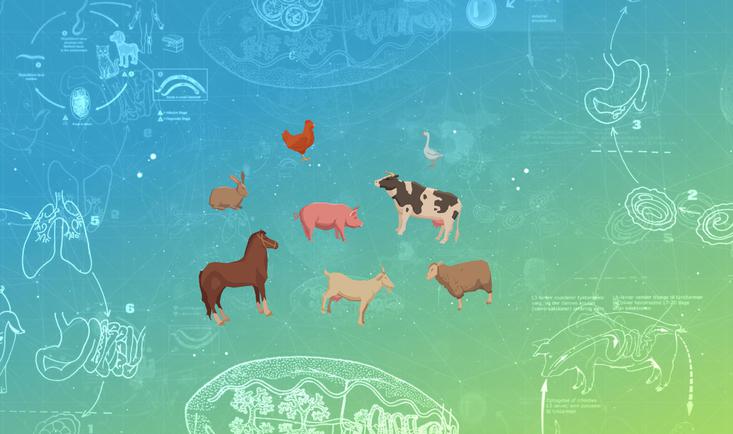
“Past and Present” of Urban Development in China 课程:前往报名学习
Through the study of “Past and Present” of Urban Development in China,learn about the uniqueness and independence of the Chinese civilization on urban development; Understand the essence of Chinese traditional urban planning ideas; raise awareness and protection awareness of Chinese traditional historical and cultural cities ; Understand the importance of urban civilization inheritance.
开设学校:昆明理工大学;学科:工学、
Through the study of “Past and Present” of Urban Development in China,learn about the uniqueness and independence of the Chinese civilization on urban development; Understand the essence of Chinese traditional urban planning ideas; raise awareness and protection awareness of Chinese traditional historical and cultural cities ; Understand the importance of urban civilization inheritance.
-0.0 Thoughts from “Urban Development”
-0.0 Introduction: Inspirations from City Developme
-1.1 Origin of City and Formation of Settlements
--1.1.1 Evolution of Primitive Settlements
--1.1.2 Characteristic of Regional Settlements
--1.1.3 Analysis of Typical Sites
-1.2 The Prototype of City: The Settlement Alliance
--1.2.1 A Special Era: Longshan Era
--1.2.2 Meaning of Longshan Settlements
--1.2.3 Urban Structures and Functions of Longshan City
-1.3 Constructions of Settlement System in the Xia Dynasty
--1.3.1 New Progress of the Xia Dynasty
--1.3.2 Territorial Space Organization in the Xia Dynasty
--1.3.3 Settlement System and Urban Structure in the Xia Dynasty
-1.4 The Shang Dynasty: The Beginning of Feudalism
--1.4.1 Interpretation of Social Development in the Shang Dynasty
--1.4.2 The Birth of Territorial Urban System
--1.4.3 Introduction to the Regional Cities
-1.5 The Western Zhou Dynasty: Relatively Independent Urban System under the Ritual System
--1.5.1 Social Conditions of the Zhou Dynasty
--1.5.2 Urban System Under the Ritual Norms: “The Rites of the Zhou Dynasty: The Artificer’s Record” a
-1.6 Changes on Urban System in the Spring and Autumn Period and the Warring States Period
--1.6.1 Social Changes was on the Rise
--1.6.2 The Urban Interpretation in the Spring and Autumn Period and the Warring States Period
--1.6.3 The Urban Interpretation of Other Cities in the Spring and Autumn Period and the Warring State
--1.6 The Spring and Autumn and Warring States Period: Version 1.0 of the Urban Response
-1.7 The Urban Interpretation of Other Cities in the Spring and Autumn Period and the Warring States
--1.7.1 Interpretation of the Qin Unification
--1.7.2 Origin of Urban System and Hierarchy
--1.7.3 Features of Urban Construction and Development in the Qin Dynasty
-1.8 The Evolution of City Functions in Han Dynasty
--1.8.1 Socioeconomic and Cultural Characteristics of the Han Dynasty
--1.8.2 Geographical Features of the Han Dynasty
--1.8.3 Introduction to Typical Cities in the Han Dynasty
--1.8.4 Introduction to Other Cities in the Han Dynasty
--1.8 The Evolution of City Functions in Han Dynasty
-1.9 Regime Changes During the Three Kingdoms, the Western Jin and Eastern Jin Dynasties, and the Sou
--1.9.1 Interpretation of Social Background
--1.9.2 Features of City Planning During the Tumultuous Period
--1.9.3 Influence of Religions on Urban Construction
-1.10 The 2.0 Version of City System
--1.10.1 Analysis of Urban System
--1.10.2 Yecheng: The Capital City in Cao-Wei Period
--1.10.3 Luoyang–the Capital of the Northern Wei Dynasty
--1.10.4 Jiankang: The Capital of 6 Dynasties
--1.10 The 2.0 Version of City System
-Chapter I First Appearance of “Past Life” of Chinese Cities
-2.1 The Great Tang Dynasty
--2.1.1 Interpretation of Social Development in the Sui and Tang Dynasties
--2.1.2 The Economic Development in the Sui and Tang Dynasties
--2.1.3 The Relationship Between the Regime and Cities in the Prosperous Tang Dynasty
-2.2 Accelerated Cultural Integration and Improved City System
--2.2.1 Characteristics of City Framework and Functional Transition in Tang Dynasty
--2.2.2 The Development Features of Emerging Cities
--2.2.3 Analysis of Typical Cities
--2.2.4 Introduction to Luoyang, the Eastern Capital of Tang Dynasty
--2.2.5 Common Towns in Prefectures and Counties and Commercial Cites in Sui and Tang Dynasties
--2.2.6 Cities in Outlying Districts and Regions Inhabited by Ethnic Minorities in the Sui and Tang Dy
-2.3 New Development in Song Dynasty
--2.3.1 Influence of Socio-economic Background in Five Dynasties and Ten Kingdoms Period
--2.3.2 Interpretation of Socio-economic Background in Song Dynasty
--2.3.3 Interpretation of City Development in Song Dynasty
-2.4 City Construction: Revolutionary Change
--2.4.1 Kaifeng: The Capital City of Northern Song Dynasty
--2.4.2 Capital of Southern Song Dynasty—Lin’an
--2.4.3 Interpretation of Regional Central Cities in Song Dynasty
--2.4.4 Fishing City: A Defensive City in Song Dynasty
--2.4.5 Cities of Western Xia, Liao and Jin in the Song Dynasty
--2.4 City Construction: Revolutionary Change
-2.5 Gloomy Yuan Dynasty: the Return of Urban Space
--2.5.1 Interpretation of the Socioeconomic Background of the Yuan Dynasty
--2.5.2 Urban Development Under the Co-Existence of Multi-Ethnic Cultures
--2.5.3 A New Interpretation of Urban Planning for Reinvention
--2.5 Gloomy Yuan Dynasty: the Return of Urban Space
-2.6 Ming Dynasty: Revival of Socioeconomy
--2.6.1 The Interpretation of the Social Background of Ming Dynasty
--2.6.2 Economic Development in Ming Dynasty
-2.7 Urban Reconstruction: The Brilliance Reappearance
--2.7.1 Interpretation of Urban Development in the Ming Dynasty
--2.7.2 The Urban Construction of Ming Dynasty
--2.7.3 The Central City Under Regional Feudal Rule in Ming Dynasty
-2.8 The City in Qing Dynasty and the Response of Tradition
--2.8.1 Social Development in the Qing Dynasty
--2.8.2 The Economic Situation in the Qing Dynasty
--2.8.3 Differences in Regional Development
-2.9 The Social and Economic Situation in the Qing Dynasty
--2.9.1 the characteristics of urbanization in the Qing Dynasty first
--2.9.2 Urbanization Under the Influence of Global Economic Integration
--2.9.3 The Characteristics of Cities in the Qing Dynasty
-Chapter II The Flourish of Chinese Cities in Ancient Times
-3.1 Struggling Under Semi-Colonial Situation in Modern China
--3.1.1 Overview of Modern China
--3.1.2 The Political and Economic Situation in Modern China
--3.1.3 Characteristics of the Development Trend of the Modern Cities
-3.2 Modern City · Development in Difficulty
--3.2.1 The Classifications of Cities in Modern China
--3.2.2 Introduce the Characteristics of Typical Cities in Modern Times
--3.2.3 The Development of Traditional Cities in Modern Times
--3.2.4 Relatively Declining Cities
--3.2 Modern City · Development in Difficulty
-3.3 The Beginning of New China·All That was Left Undone are yet to be Dealt With
--3.3.1 Socio-economic Situation in the 1950s
--3.3.2 Socio-economic Status in the 1960s and 1970s
--3.3.3 Overview of the Development of City Planning in New China
--3.3 The Beginning of New China·All That was Left Undone are yet to be Dealt With
-3.4 The Interpretation of City Planning Before 1970s
--3.4.1 The Historical Features Reflected in Urban Development and Construction before the Reform and
--3.4.2 City Planning in 1950s
--3.4.3 Strategic City Planning in 1960s and 1970s
--3.4 The Interpretation of City Planning Before 1970s
-3.5 Modern City: Exploration of Pluralistic Thoughts
--3.5.1 Socio-Economic Background in 1980s
--3.5.2 City Planning in 1980s
-Chapter Ⅲ: The Development of Chinese Cities in Mo
讲师。入职以来担任中国城市发展史、城市生态与环境规划及城市规划设计等多门课程的教学任务。2017年云南省首届高校教师教学比赛一等奖。多次指导学生参加全国高等学校课程作业竞赛获奖。主持参与多项校级教学改革项目;参与多项省级科研项目和国家自然科学基金项目。
教授,副院长,博士研究生导师。中国建筑学会史学分会学术委员、住建部传统村落专家委员会委员、城市更新委员会委员。获得云南省自然科学技术奖励自然科学类三等奖2项,获伍达观杰出教师奖。
讲师,硕士研究生导师。曾工作于云南省城乡设计研究院,后毕业于东南大学,获城市规划博士学位。任教主要从事城乡规划、历史城镇保护与更新,城市设计等研究与教学工作。获国家建设部优秀规划一等奖一次,二等奖一次;省级优秀规划一等奖两次,二等奖一次;指导学生获国家级竞赛一等奖一次,三等奖三次,优秀奖三次;获国家级教研论文奖两次。参与《中国城市发展史》慕课教学研究;参与国家自然科学青年基金项目一项;主持云南省级人培基金项目一项;参编《城乡规划原理》(2018年出版)。
城乡规划系副主任,讲师。担任城市规划原理、城市道路与交通规划、城市总体规划、毕业设计等多门课程的教学任务;2009年《城市规划概论》教材参编,2017年《城乡规划原理》教材副主编。参与编写的教案和指导的学生作业多次在“全国高等城乡规划教育年会”中获奖;2017年所指导的学生作品“因水而生 生态慢城”获得第十五届亚洲设计学年奖专项金奖。主要参与云南省级教学改革项目1项,主持和参与校级教学改革项目各2项,获得校级教学成果特等奖2项、二等奖1项。
城乡规划系主任,讲师,硕士研究生导师。国家注册规划师、二级注册建筑师,昆明理工大设计研究院总规划师。主讲城市规划原理、城市住区理论与方法、 城乡规划理论与实践等课程。主持和参与完成“瑞丽边界合作区规划”、“昆明世博生态城规划研究”、 “曲靖南盘江沿线空间规划”等多项纵向科研和设计实践项目。研究方向为城市规划与城市设计。
讲师,从事建筑类专业教育技术研究。“OR专业教学网络平台”教学系统研发负责人,该系统目前应用于多所985、211院校,如同济大学、华南理工大学、华中科技大学、四川大学等,实现了专业教学资源数据共享和校校间的互动教学。2014年在全国高等学校城乡规划学科专业指导委员会年会发表论文一篇,获发言论文奖;2016年获昆明理工大学校级教学成果特等奖一项;参与省级精品课程一项,目前已经结题;主持校级教改一项,目前已经结题;参与校级教改重点课题一项,目前已经结题;参与2018年省教育厅本科教育教学改革研究项目一项,目前在研。

